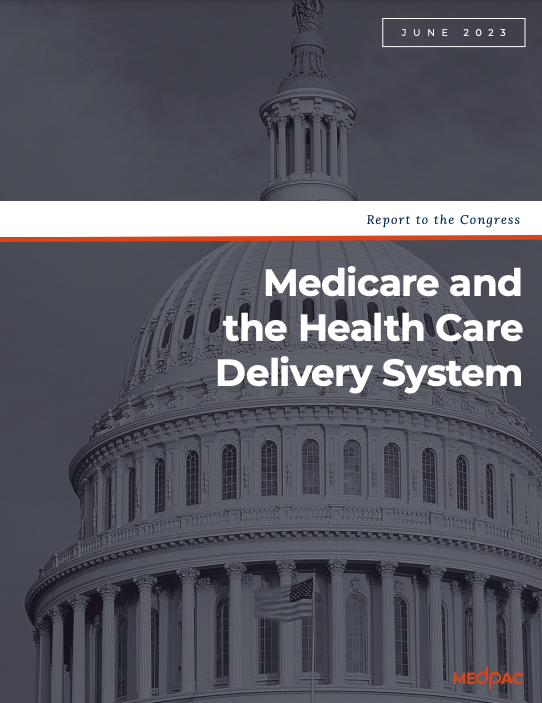Article
Physicians, telehealth advocates picking sides on issues of Medicare reimbursement
Author(s):
Analysts ponder potential effects of MedPAC report to Congress.
The Medicare Payment Advisory Commission, known as MedPAC, issued its June 2023 Report to Congress on June 15, 2023.

Physician and health care organizations continue to analyze possible effects of this month’s analysis by the Medicare Payment Advisory Commission, known as MedPAC.
Site-neutral payment has forced physicians, patient advocates, and hospitals and health systems to take sides in the debate over Medicare reimbursement rates based on location of care.
Meanwhile, MedPAC repeated its call for a return to pre-pandemic reimbursement rates. But at least some lawmakers would consider making permanent the telehealth reimbursement that expanded when physicians and patients consulted online to slow the spread of COVID-19.
Equal pay for services
The 10-chapter “Report to the Congress: Medicare and the Health Care Delivery System” included a recommendation for “aligning fee-for-service payment rates across ambulatory settings.”
This week, the American Academy of Family Physicians (AAFP) issued a statement in support of site-neutral payment. AAFP and the American College of Physicians both are part of the Alliance for Site Neutral Payment Reform, a coalition of “patient advocates, providers, payers, and employers who support payment parity” regardless of location.
“The AAFP has long supported the advancement of site neutral payment policies across ambulatory,” the Academy’s statement said. “We appreciate MedPAC recommending Congress expand upon existing site neutral payment policies – this is an important step in addressing health system acquisitions of physician practices.
“As we continue to review MedPAC’s latest recommendations and the potential impact on family physicians and their patients, policymakers must ensure that additional site neutral payment policies effectively disincentivize consolidation, reduce beneficiary cost-sharing, and realign incentives to support physician practices,” the AAFP statement said. “The AAFP is also advocating for lawmakers to reinvest savings into Medicare’s physician payment system to keep pace with rising practice costs and ultimately support beneficiaries’ timely access to care.”
The American Hospital Association has argued site-neutral payment would hurt rural hospitals the most, making a -17.8% operating margin even worse to -21%
Make it a law?
The American Telemedicine Association (ATA) and its ATA Action advocacy nonprofit did not opine on the MedPAC report. But ATA supports the bill Creating Opportunities Now for Necessary and Effective Care Technologies, or CONNECT for Health Act of 2023.
That legislation has been reintroduced with bipartisan support in the Senate and House, according to ATA.
“Telehealth is an issue that has consistently attracted bipartisan, bicameral support and we are very encouraged at the incredibly strong Congressional show of support, to this day,” ATA Senior Vice President for Public Police Kyle Zebley said in a statement. “We pledge to continue to engage our members, telehealth stakeholders and our novel Patient Voices for Telehealth Coalition members to help advance this important legislation.”
ATA’s legislative summary said the bill would:
- Permanently remove all geographic restrictions on telehealth services and expand originating sites to include the home and other sites.
- Permanently allow health centers and rural health clinics to provide telehealth services.
- Allow more eligible health care professionals to utilize telehealth services.
- Remove unnecessary in-person visit requirement for tele-mental health services.
- Allow for the waiver of telehealth restrictions during public health emergencies.
- Require more published data to learn more about how telehealth is being used, impacts of quality of care, and how it can be improved to support patients and health care providers.
Telehealth issues
MedPAC did not make a formal recommendation about Medicare’s future handling of telehealth services. The commission repeated its March 2021 argument that CMS should resume paying lower rates for telehealth services “as soon as practicable after the PHE,” the COVID-19 public health emergency that ended May 11. Most expanded telehealth benefits will continue through the end of 2024.
There was an analysis showing the explosion of use of telehealth during the COVID-19 pandemic “was associated with little change in measured quality, slightly improved access to care for some beneficiaries, and slightly increased costs to the Medicare program in 2021.”
An exact analysis is difficult because of data lags and COVID-19 surges in 2021, MedPAC said. The Commission noted telehealth spending was “very low” at $130 million in 2019, but that ballooned and peaked at $1.9 billion in the second quarter of 2020.
Total telehealth spending hit $4.8 billion in 2020 and $4.1 billion in 2021. The number of beneficiaries receiving telehealth services grew from 239,000 in 2019 to 14.2 million in 2020, then declined to 9.7 million in 2021.
Clinicians told the Commission that they appreciated the convenience and flexibility of telehealth, although some preferred in-person visits, and that telehealth visits generally took less time and cost less. In a survey, 40% of Medicare beneficiaries who were telehealth users said they were interested in using it after the pandemic.





